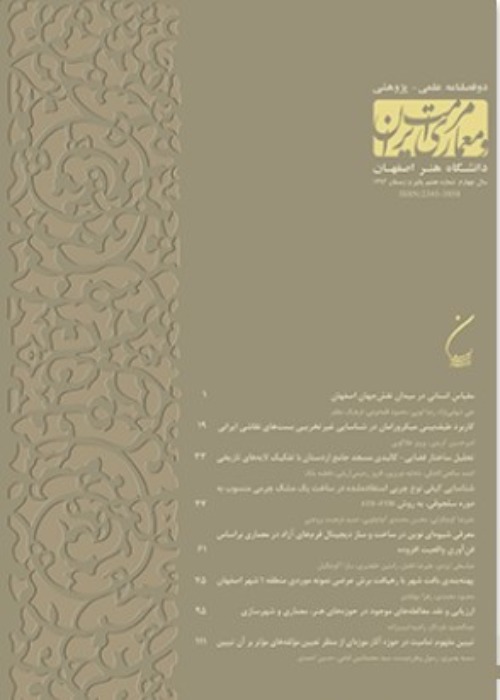Investigating cultural aspects with the foundations of religious ceremonies in residential heritage with an emphasis on on the historic houses of the Muslims in Esfahan
Collective rituals have always had an influence on the body, the function and thecontent of houses with an interaction with them. Houses, with space and ritual functionshave played a fundamental role in shaping the social structure of historical neighborhoodsand the religious and cultural foundations of society. Holding religious ceremonies inevery home has strengthened the social bonds of that home with society. In the Shiiteculture, the mourning ceremonies held in Muharram and Saffar are of high semanticvalidity and constitute a set of rituals and ceremonies that have gradually become diverseand part of the community’s culture. During the Safavid and Qajar periods, because ofthe role that religion played in the social life of society, specific places for worship wereestablished, the most prominent of which were the Ashura rituals. The ambiguity of therole of religious communities and rituals in influencing the creation and perpetuation ofEsfahan’s residential heritage and neglecting these aspects in the process of conservationand recognition of architectural heritage has been the main motivation for the presentstudy. This research seeks to answer how home-based religious rituals influence thesemantic, functional, and physical aspects of residential heritage. The following question:How do the religious rituals and rituals of Muslims influence the structure of historichouses in Esfahan was answered in the present study by analyzing the interplay of Muslimrituals and rituals as one of the identity-religious foundations of Iranians in the contentfunctionaland physical system of residential heritage, explaining changes and impactson the structure of Esfahan historical houses to be paid. This research is a descriptiveanalyticalone with the objective of development and by adopting library documents,field studies and interviews. The findings are analyzed by qualitative method throughcomparison and interpretation. The results show that the interaction and continuity ofreligious rituals and historical houses in Esfahan have caused the creation of domesticmourning objects. These objects have been manifested in the form of expanding religiousspaces and elements outside the physical boundaries and in conjunction with homeand changes in spatial organization, hall form, furnishings and architectural-relateddecorations.
- حق عضویت دریافتی صرف حمایت از نشریات عضو و نگهداری، تکمیل و توسعه مگیران میشود.
- پرداخت حق اشتراک و دانلود مقالات اجازه بازنشر آن در سایر رسانههای چاپی و دیجیتال را به کاربر نمیدهد.




